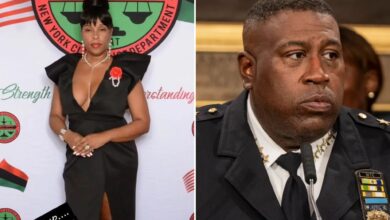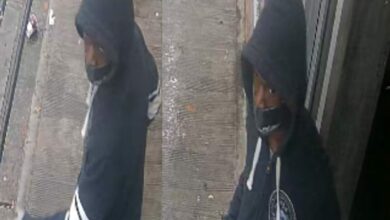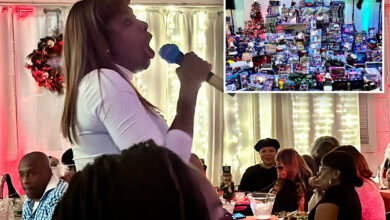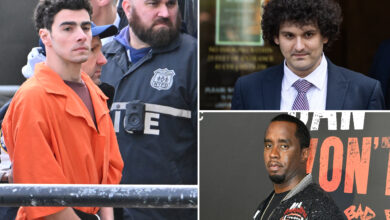NYC congestion toll would hit neighborhoods with some of worst vacancy rates in city — as GOP issues warning to Dems
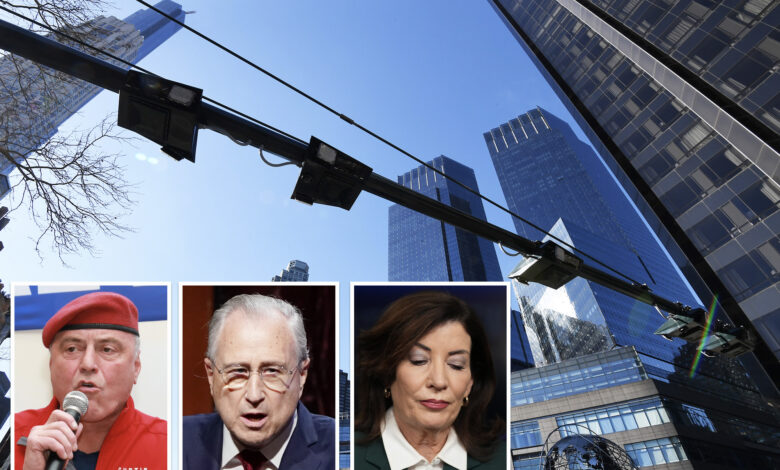
Republicans are pledging to make sure Democrats pay the political price for a new Manhattan congestion toll – as a new report revealed affected neighborhoods already have some of the worst vacancy rates in the city.
The GOP may not be able to stop implementation of the Gov. Kathy Hochul-backed $9 base toll to enter Manhattan’s business district — a first-of-its-kind fee in the nation — but officials are already looking at it as a major campaign issue against Democrats in future state and city elections.
“Congestion pricing is a continuation of Democrats’ tax and spending policies in Albany and New York City,” said state Republican Party chairman Ed Cox. “Every Assembly member and senator who voted for this law will have to explain it. It makes no sense.”
Opponents, meanwhile, claim that a new Department of City Planning report suggests that the new toll could economically damage Manhattan neighborhoods in the toll zone already suffering from hundreds of empty storefronts.
Six of the city’s top 10 neighborhoods with highest storefront vacancy rates are in the toll zone, as are 10 of the top 20 communities.
The report, released last Friday, reveals:
- 24% of storefronts are vacant in the Financial District/Battery Park, highest in the city.
- The vacancy rate was 21% in the Tribeca/Civic Center followed by 20% in Chinatown, and 19.2% in East Midtown/Turtle Bay.
- The vacancy rate was also 17% in Chelsea/Hudson Yards and Midtown South/Flatiron Union Square and 16% in Midtown/Times Square, Soho-Little Italy and the Lower East Side and 15.7% in Greenwich Village.
One Lower East Side activist, retired state Supreme Court Judge and former Democratic Councilwoman Kathryn Freed, said state and MTA officials never conducted an economic assessment of the new toll and the City Planning data provide evidence it could hurt neighborhoods in the congestion zone.
“No one looked at the economic impact,” said Freed, a leader in New Yorkers Against Congestion pricing. “We have vacant buildings, empty storefronts.”
She also said Hochul has handed Republicans a gift they can use to bludgeon Democrats in upcoming elections– and jeopardize her re-election in 2026.
“It’s going to elect Mike Lawler,” said Freed, referring to the Hudson Valley Republican congressman, who is weighing a run.
Guardian Angels founder Curtis Sliwa, a Republican who is planning another run for mayor in 2026, said the toll is going to “kill Manhattan.”
“There are empty storefronts now in Midtown,” Sliwa said. “You know what this means? More of an exodus south of the Mason-Dixon line.
“We are the party representing the working class.”
Junior’s restaurant owner Alan Rosen, who has eateries in Times Square and also is weighing a run for mayor called the fee “totally insane.”
“It’s absolute nonsense to charge people more to come into the greatest city in the world,” he said. “It’s anti-business, it’s anti-visitor. It’s totally insane.
“Can we stop the madness, please?”
The MTA board is scheduled to vote Monday to implement the new toll, effective Jan. 5.
While Hochul has the votes on the board to muscle it through, it’s expected to have some opposition. Mayor Eric Adams’ appointees are expected to back the new toll.
The governor In June issued a “pause” or suspension of the planned $15 toll to enter Midtown south of 60th Street just weeks before it was to be implemented, in what many believe was a political strategy to prevent a backlash against Democratic candidates running for Congress this year.
Last week, Hochul revived the plan days after the election, calling for a $9 toll instead — although it will balloon to $12 in 2028 and higher thereafter. Supporters have touted the plan as a way curb traffic and pollution in Midtown although the MTA is relying heavily on the new income generated to help bankroll its capital program.
“The Governor’s initial instincts were right. The issue hasn’t changed and neither has my opposition. Congestion pricing places too much of a burden on our regional economy whether it is $15 or $9,” said David Mack, a Nassau County appointee on the MTA board, told The Post Sunday.
A Siena College survey released in April found nearly two-thirds of New York City voters opposed congestion pricing, as did 72% of suburbanites.
There’s also blowback from outer-borough Democrats as well as Republicans who showed up at an anti-congestion toll press conference in Fresh Meadows, Queens Sunday.
“I have to point out the obvious, $9 is a lot more than the current rate, which is zero,” said Assemblyman David Weprin (D-Queens). “This is not a savings. It’s another tax that working New Yorkers cannot afford. Congestion pricing is not a fair deal for New Yorkers.
“Manhattan has not recovered from COVID-19,” he added. “There are still office buildings that are not full.”
Assemblywoman Nily Rozic (D-Queens) agreed, saying, “Affordability is really the most important thing that voters, that constituents, that people on the street, talk to us about, and we have to hear that.
“So that’s why I’m here standing with constituents to say, keep the pause,” Rozic said. “We don’t need to do this right here right now.”
Former Gov. Andrew Cuomo and the Democratic-run legislature in 2019 approve the law that authorized the MTA to impose the new congestion toll, but earlier this year he questioned whether now is the best time to do it. He’s weighing a comeback bid run for mayor.

